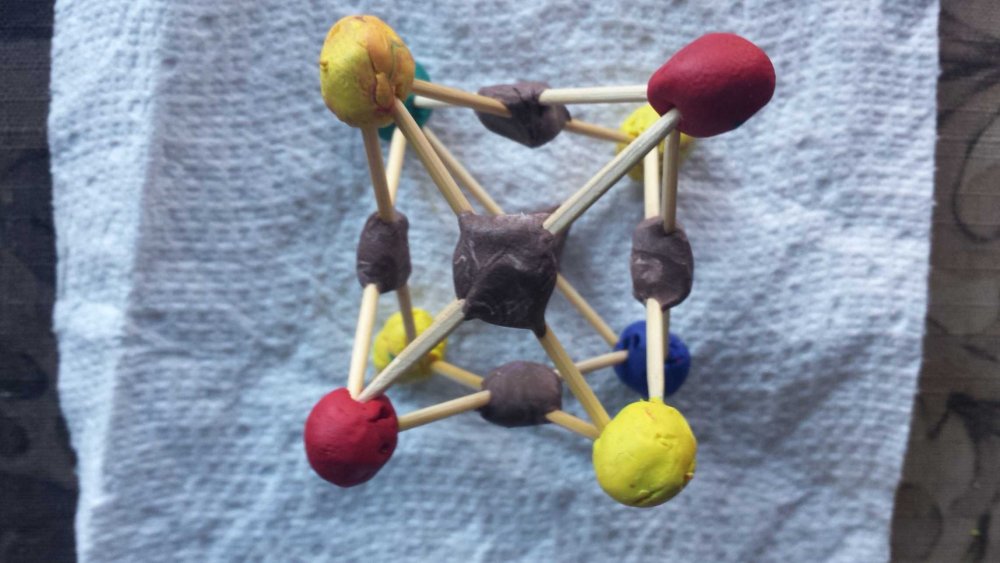-
Posts
4360 -
Joined
-
Last visited
Content Type
Profiles
Forums
Events
Everything posted by tar
-
If the spiral arm of a galaxy contains a lot of stars and mass and you pick a point on the fringes of the galaxy the gravitational pull of the arm will speed up a mass that is "behind" it, rotationally and retard the rotational movement if it is"ahead" of the arm and the arm would add to the gravitation mass of the center of the galaxy if center of mass of the arm was between the fringe point and the center of mass of the galaxy. Thus "when" the arm is in the various positions relative to the fringe point matters in terms of the acceleration the arm's mass will impart on the fringe point. swansont, the galaxy pictured was seen from its axis of rotation. All the fringe was equal distant more or less. An edge on galaxy the far side would be further away and hence what you saw of it was its position a long time before what you see on the closer edge. Regards, TAR edge on the close edge is more recent than the far edge. Looking from the axis of rotation the edges are all approximately equal in age. If my theory is correct the rotational speeds of galaxies viewed from the axis of rotation would be more consistent with Kepler's law than galaxies viewed edge on. I do not know if there are observations categorized in this manner. Edge on or from the axis of rotation. not theory, not even hypothesis. If my speculation is correct the edge on galaxy would be figured to require more dark matter to explain its rotation than the axis viewed galaxy because the time component is not throwing off the observation as much in the axis view
-
I am not sure why you know the center is not rotating. Don't you have to watch a galaxy for a thousand years before you notice a change in position of a unique star? You can only use red shift and blue shift if the galaxy is edge on. Looking at it form the axis you don't know any of it is rotating. SwansonT, long time no argue with. Good to see you. Well Jupiter did not have a strong gravitational pull until it formed out of the accretion disc of the solar system. You cannot measure Jupiter's gravitational effect on Sirius unless there is a Jupiter. '
-
Thread. Lets say mass accretes and tiny pieces of matter gather in one location to make a massive object. This mass does not instantly affect all the rest of the universe, does it? Objects close to it I would imagine are effected first and objects further away later. After a time X after accretion a close object has been subjected to its gravity for nearly all of time X whereas an object far away from the accretion is yet to fell its effects.
-
yes i like the MOND solution. I am maybe turning to looking for an explanation of the difference in gravity effects at large distances that would help base the MOND solutionk that involves the delay in gravity's effect on distant objects based on the "speed" of gravity. Thus timing and the consideration of which parts of the model exist "at the same time" becomes pertinent. Regards, TAR I notice that we are seeing it from its axis of rotation. That is, if we look at a galaxy edge on the closer part of the galaxy is on the edge closest to us but here the fringes of the galaxy are all the same distance, hence happening at the same time as the other portions of the fringe. Although I would still imagine that the center of the pictured galaxy is closer to us then are its fringes. Thus implying that we see the rotation near the center before we see the rotation at the fringes that was occurring simultaneously Regards, TAR
-
I understand I am lacking in the math department exchemist, but I am not there yet with this idea. I am trying to set the assumptions and groundwork for expecting the universe to be connected to itself and be composed of ordinary matter and energy that we have been studying for years and know a lot about. If something only fits the math and has not correlation to reality and ordinary matter and energy, what is the use of it? It is like people finding PI to the quadrillionth digit. Why? You cannot measure or fabricate to that precision so what is it for? I think math is very useful, but it is a symbol system. You have to know what is standing for what. You have to be able to say it words to know what you are setting to what and what relationship you wish to illustrate. You cannot for instance figure that half a cow will give half as much milk. Half a cow would give half as much hamburger.
-
I think I will retire from the discussion for a while. I am trying to offer a required adjustment to our understanding of galactic rotation and you are trying to teach me the standard model, which is find currently in trouble. Dark Matter to me is much like the epicycles of the planets observed. The standard model keeps requiring changes in the cosmological constant and the age of the universe and such and requires the place be made up 95% by dark matter and energy and never observed either one. We infer the presence of such to true the model with observations. Perhaps we can true the observations with our model by adjusting our model, not by proposing imaginary particles and forces.
-
Genady, We cannot know the position and velocity of a particle such as an electron of an atom with certainty. what makes you think we can know the position and velocity of a star with certainty?
- 50 replies
-
-1
-
suppose a star is seen at vector A but is 10 ly away and has traveled in those 10years it took the light to reach us to vector B. Does the Kepler equation used to figure the speed of rotation of the galaxy use vector A as the star's position or vector B? Genady, I have mused on this quite a bit. I have some relativity books downstairs and have discussed this on this forum in the past. My thought is that one CAN assume simultaneity regardless of observer by positing the godlike perspective that puts everything in the universe currently existent at the age of the universe. Of course we cannot see it because it take light time to get here. We NEVER see the universe as it is presently, we always see it as it was when the light that left it, left it. The "same" time is observer dependent and as you say an observer closer to the event sees it before an observer more distant, but the fact remains that the event occured already and other events other places in the universe occurred at that same moment. Regards, TAR
-
Sorry but the article was not comprehensible to me. I talked about motion in the early universe and later and now and miscalculations and previous definitions of dark matter and the expansion rate of the universe and such and I have no idea how they have come up with such things and what they are trying to say. Bottom line, they seem to not have "found" the particle required to account for the dark matter they need in their velocity of rotation calculations. This makes me double down on my speculation. Perhaps they are trying to apply kepler's law concerning the solar system to the Galaxy and perhaps the size of the galaxy affects the gravity between the components in such a way as interactions are not instantaneous and the gravitational effects are delayed and speed of rotation is NOT as if a fixed connected disk is rotating but the gravitational "pulls" are at vectors related to where mass "was" not to where mass currently "is". A consideration of mine that is not mainstream. Relativity assumes there is no special frame of reference. I assume that here and now is our special frame of reference and we can subtract and add back and such to figure what the orientation and arrangement of the universe around us is most likely currently like, as well as what is was like at various times in the past. Nothing we see is current. It is all old news, but we can imagine things progressing without us seeing their progression yet. So if you imagine where a star you see in the night sky actually exists currently you are looking at it from a Godlike perspective.
-
The whole idea of dark matter came about by studying the motion of a supernova in a distant galaxy I use them here to point out that someone measuring the rotation of our galaxy based on a supernova is looking at a supernova that already happened here long ago. We saw it long after it occurred and the other galaxy sees it long after we saw it. Not sure. I base my concerns on stuff I have read in the past. I mentioned some of what I am mentioining not on this forum years ago. I do not know which of what I have said is currently incorporated into the calculations.
-
Let me ask the question this way. How many supernovas are there currently in our galaxy? All depends on what you consider currently. In actually the supernovas currently going on in our galaxy are not know to us. It take their light thousands of years to get to us. Astronomers 2 or 5 or 10k years from know will see them. you are suggesting everyone already takes the time and distance into consideration but I know for a fact that people, scientists in particular use the word now and mean different things without "mentioning" what they are calling now.
-
dark matter is by definition not observed Perhaps we know but perhaps not Genady. For instance it is NOT usually mentioned whether we are considering the position of an observed star as it was when the light left it, as it appears to be now or as it actually is after traveling around the Millky Way center for the time it took the light to reach us. Three different positions. We perhaps know how to calculate the differences but what is the assumption being made by the calculator as to what is being held as the reference and what difference is being caluculated. Like I said, everything in your mind happens at the same time, everything you observe already happened as long ago as the distance
-
I have a foundational understanding that we build an analog version of the universe within the folds and synapses of our brain that we hold all at once, the whole universe at once. However the universe does not happen all at once, it takes time for one part of it to reach another part. Each point in the universe is surrounded by thje others at increasing distances and the far away stuff has not yet communicated its current position to us...etc. The situation is we match external reality to our image of it that we build in our brains through what we see and hear and feel and smell and taste and deduce. If your image of the world exactly matches what you sense you have it exactly right. If a lot about the external world needs to change in order for your image to be correct your image is likely incorrect. It is MUCH easier to adjust your image to match the world than to adjust the world to match your image. Dark Matter is a made up thing. Easier to discard it and bold an image that matches our senses. Regards, TAR How so? Are we assuming the distant parts of our galaxy are in the same time as the close parts? The dark matter is added because the equations don't come out right and the observed rotation requires more mass. The dark matter is not observed. It is proposed as being present to explain the rotation.
-
Genady, My thought that the calculations are missing something is that they need dark matter to provide the extra mass to arrive at the observed rotation. Imagine if there IS no such thing as dark matter and the observations are incorrectly interpreted. it is easier in my thinking to discard imaginary dark matter and look for the manner in which the equations are misapplied. Regards TAR After all we don't notice any dark matter locally. It is only noticed in the rotation of distant galaxies. It is a device to true the equations. Perhaps there is another way to true the equations. Optical illusions are possible. Things big look small far away. Things very far away from each other look close to each other when they are at the same inclination and rotation but the one is 10lyrs from us and the other is 100ly. Stars on the other side of the Galaxy are NOT where we see them. They have traveled around the Milky Way for 10K years since they were in the position we see them in. There are two different nows we should imagine. One that includes the stars in the positions we see them and one that includes the stars in the position that a God would find them now. the close part of a distant galaxy is in the position it was in 5 million years ago. The further parts might be in a position they were in 5.01 we do not know if gravity works instantaneously or whether it works over time. Thusly you cannot use the same equation for gravitational rotation when you are looking at elements that are in a position at a defined time when they are no longer actually in that position. We can imagine an arrangement all at once in our minds, but in actually light and probably gravity take time to travel across great distances. One part of the image is not immediately known to the other part in reality as it is in the image in our minds.
-
My thought is that the distance and size of distant galaxies is not taken into consideration when applying rotational and gravitational equations. To apply the equation the rotation of the galaxy in question is considered as one thing rotating at once. This is not what we see. We see the closer parts of the galaxy 10s of thousands of years before the further parts. That is we cannot use one equation that takes the whole galaxy at once because we are seeing the galaxy at different times and any motion needs to be thusly "played back" to arrive at a position of the various stars at one moment where they were all in the same moment and then derive their positions in the next moment. Regards, TAR
-
I have been still working with this figure, clay versions, toothpick versions, drawing on balls and such over the years since I posted here. I sort of got chased off the board for political reasons but still have my thoughts in private. Here I want to sort of update my progress by showing how garnet crystals tesselate space and give my numbering system for the twelve sections of the sphere. Here each garnet crystal, 12 sided with diamond shapes, represent the twelve sections of the sphere. The crystals can be achieved by flattening the edges of a cube until they meet at a 4 point on the faces of the cube and a three point at the corners. The arrangement is exactly the same as if you surrounded a ball with 6 others stacked three on the top and three underneath. A stack of cannonballs would achieve this arrangement starting with a square base plane or a hexagonal base plane. The garnet shaped clay pieces fit together exactly and each element solidly touches at its faces with 12 similar garnet shaped elements of the same size. One can imagine this arrangement of space by sitting in a cubicle room and imagining a direction from the center going through the midpoint of each edge of the room. There are twelve equally spaced directions defined. four where the walls meet the floor.. Four where the walls meet each other and 4 where the walls meet the ceiling. For understanding of the difference between the directions, since they are all relatively similar I have established a convention where they are numbered 1 through 12, and arbitrarily picked the directions as if you are sitting in the center of the room facing North with the walls of the room going North to South and East to West. number one is up and behind you number two is left and up number three is right and up number four in up and front five is front and left 6 is forward and right 7 is forward and down 8 is down and left 9 is right and down 10 is down and behind 11 ia left and behind 12 is behind and right. Of course these directions are not universal as the Earth is spherical and your room could be anywhere on Earth at any elevation and the Earth rotates on its axis and revolves around the Sun and the equator of the Solar system is tilted forward 60 degrees hurting around the Center of the Milky Way and we are not particularly certain of how the Milkyway is moving and oriented to the great attractor, so the directions can be used from any observer facing north in a cubical room in general but to be used universally a reference room needs to be arbitrarily assigned. Being as I am now at the announcement of the scheme near Radford VA at an elevation of 2000 ft I propose the reference position be an observer at 37.1485degees N 80.5784degrees W On NOON EST January 20th to give a universally recognized time. Thusly the position of the Earth and the position of the reference room on the Earth will be established. Of course for any particular purpose the numbering scheme can be used and you just need to establish which direction is up, and forward. Being a person left and right is universally agreed upon. What I just recently noticed is that you can with this system define every point in space from a starting point and direction without using degrees or pi. That is, as shown in the thread the dense packed spheres build out layer by layer and form a cube with the corners cut off. Thusly you can exactly define any direction by naming the position of the garnet crystal that you wish to draw a vector through the center of. Which layer and which garnet crystal on the layer can be defined as a position on a certain face of the cuboctahedron structure that thusly builds out. I have not yet come up with a simple way to define this because my 71 year old brain does not nimbly jump between the dual figures involved. One has 12 faces and 14 vertices and the other has 14 faces and twelve vertices but it is the same figure directionally speaking as each Vertice of the one corresponds exactly with the center of a face of the other I post a thought in progress in the hopes that other nimbler minds can help me work out the best scheme and the corresponding math involved. My hope is that these positions can be defined EXACTLY and PI to a certain number of decimal places plays no role whatsoever.
-
Input screen deleting my responses. Talk to you all when I am free to express my ideas. Which given the bots and watchers around here is never.
-
I have read that many times over the years, and always have not agreed on what was proven or disproven We are back to the river question. Is the distance traveled by the photons along the river bottom, or through the ether. I submit that the mirrors at the end of the experiment were in different locations all during the experiment and at the beginning. The Earth is moving, the Sun is moving, the Galaxy is moving. Any one photon does not know it is in an experiment. Question for you. When a photon hits a mirror, is it the same photon that bounces off, or is the original photon absorbed and an identical quantum of energy released? So why not consider the Earth as a preferred frame? Then measure what is moving relative to it and what it is moving relative to? Relativity is, in my opinion understood completely when you notice that your location is unique and all other locations are a distance from you, and light takes time to travel that distance, And all other locations exist in a particular orientation to everything else, only once in the same way that your present happens only once.
-
I choose to consider that there is an absolute frame and that is the frame in which in which light travels. often in experiments there is a choice as to what you hold constant and compare everything against a photon does not know it is in an experiment. It just goes out from the source when an electron falls from one quantum level to another the fall creates a particle or a wave or some combination but an impulse that travels out across the fabric of space til it hits an electron in an atom somewhere and gives up its quantum of energy to the electron which then exists in a higher energy state you can't tell a lot from the energy that one photon hits with, you need a bunch to make a case a bunch can only be available if many sources are considered and they are created over time such is a problem when doing experiments or using data from distant stars where you get one photon an hour from the source and you don't know how the source changed in that hour but, I think there is experimental evidence that there is a reference frame that stays constant, because we measure the blue shift and red shift of hydrogen lines that tell us we are moving toward or away, relatively from the source
-
understood, but there is a difference considering the distance traveled relative to the river bottom and the distance traveled relative to the surface. there is disagreement as to what it is that light is crossing the ether is both proved and disproved in an experiment or an analogy you have to agree on what IS space are you crossing the river bottom or are you traveling across the surface
-
Here is a toothpick and clay version of the twelve sections of the sphere, made up of two tetrahedra. The yellow tetrahedra is one the red,green and blue is the opposite Note that the combination yields a cube and the center of each of the twelve diamonds is on the center of one of the edges of the cube.
-
I think I am not clear on what is standing for what in the river analogy. One of the confusions in my understanding of relativity is when distance is used in a spacelike way and when it is used in a time like way. My solution is to consider… My entry screen is confounded. Even in word.




